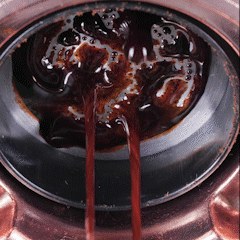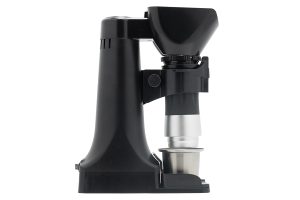Flair Espresso Bottomless Troubleshooting Instructions
Bottomless 2-in-1 Portafilter: Troubleshooting
It’s finally here! Now what?
If you’ve never used a bottomless, or “naked,” portafilter before you are in for a real treat. And a bit of a challenge. But this post isn’t just for newcomers of bottomless brewing, it’s also for seasoned pros. As with all things Flair, successful manual brewing with our new Bottomless 2-in-1 Portafilter requires a small learning curve. When you no longer have a spout to direct the flow exactly where you want it, you have to pay closer attention to all the details to avoid a mess and experience Espresso Made Right with your Flair.
Bottomless portafilters (BPF) have visual markers that provide feedback on the quality of your extraction. While a spout commingles all the individual streams of the extraction into a tidy, single stream, which easily hides an uneven extraction from view, the BPF lays bare the fruits of your labor or the error of your ways. Consistently even extractions are only repeatable with a dialed in process. If you don’t already have one, there’s no time like the present. You’ll be happy that you did!
When using the Bottomless 2-in-1 Portafilter, you have to be diligent with your dose, distribution and tamp or your experience with pulling naked shots will be hit or miss–mostly miss. Once you remove the spout you are opening up Pandora’s Box so-to-speak, and there are more than a few things that can go not according to plan.
- Large regions, or pockets, or lighter/darker extractions visible from bottom of the basket
- Spritzing, spraying or dripping from your BPF
- Un-centered flow
Large Regions of Lighter or Darker Extractions
When you observe large pockets of light and dark extraction coming from your BPF, rather than a ‘tiger striping’ of alternating streams of lighter and darker flows, you have areas of your coffee cake extracting at lower and higher rates simultaneously creating an uneven extraction. There are several methods for improving distribution of coffee in the basket, but vigorously stirring the coffee once dosed with a thin tool, often referred to as the Weiss Distribution Technique (WDT), is the most common. Tapping the bottom of the BPF down on to the counter alone or in conjunction with WDT helps to ensure any pockets are collapsed prior to delivering the tamp. On the subject of tamping, the old standard of 20-40 pounds of pressure is largely unnecessary with lever machines. Start looking at the tamp more as a means to level the cake more so than compressing it.
Spritzing, Spraying or Dripping from your BPF
 Spritzing, misting, or errant sprays of coffee from the BPF are usually the result of poor distribution of the grounds and an uneven tamp. Uneven distribution in the coffee cake creates channels that allow brew water to take the path of least resistance and run at a higher rate, breaking free of the flow in concentrated jets that make a mess of you, your Flair and your counter.
Spritzing, misting, or errant sprays of coffee from the BPF are usually the result of poor distribution of the grounds and an uneven tamp. Uneven distribution in the coffee cake creates channels that allow brew water to take the path of least resistance and run at a higher rate, breaking free of the flow in concentrated jets that make a mess of you, your Flair and your counter.
A spritz or spray that shoots sideways and hits the skirt of the portafilter up high can create a bridge for the extraction to jump the tracks and continue to pull out to the edges where it can pool and drip. In addition to proper puck prep described in #1, a 10s-15s pre-infusion coupled with better lever control can reduce the chances of these jets of coffee from forming; too much pressure on the lever when the extraction has low viscosity can exasperate the phenomenon.
Un-Centered Extraction
 As for #1 and #2, proper puck prep, pre-infusion and precise lever control will ensure best results and that you center-up right off. That said, don’t forget to level your Flair before brewing! Often over-looked, a level brew head is integral to proper centering with a BPF.
As for #1 and #2, proper puck prep, pre-infusion and precise lever control will ensure best results and that you center-up right off. That said, don’t forget to level your Flair before brewing! Often over-looked, a level brew head is integral to proper centering with a BPF.
If you’re like us, you aren’t using the included screw to lock the lever and post assembly to the oval base of your Flair, you will likely notice it declines to the front of the base. This will cause your shots to pull in that direction to some degree. Depending on the angle of your Flair (use a level on your portafilter base), the flow from your BPF could make contact with the skirt of the portafilter and cause some of your extraction to drip from there. In that case, consider shimming the leading edge of your oval base to obtain level. If you are using the included screw, your post will be pulled vertical and not lean forward so this won’t apply to you. Of course, the surface you are setting up on might not be level to begin with so check for level and shim accordingly.
If you or anyone else has any trouble with the above, or any questions regarding Flair’s new Bottomless 2-in-1 Portafilter, as always, we at Team Flair are here to help so get in touch!

